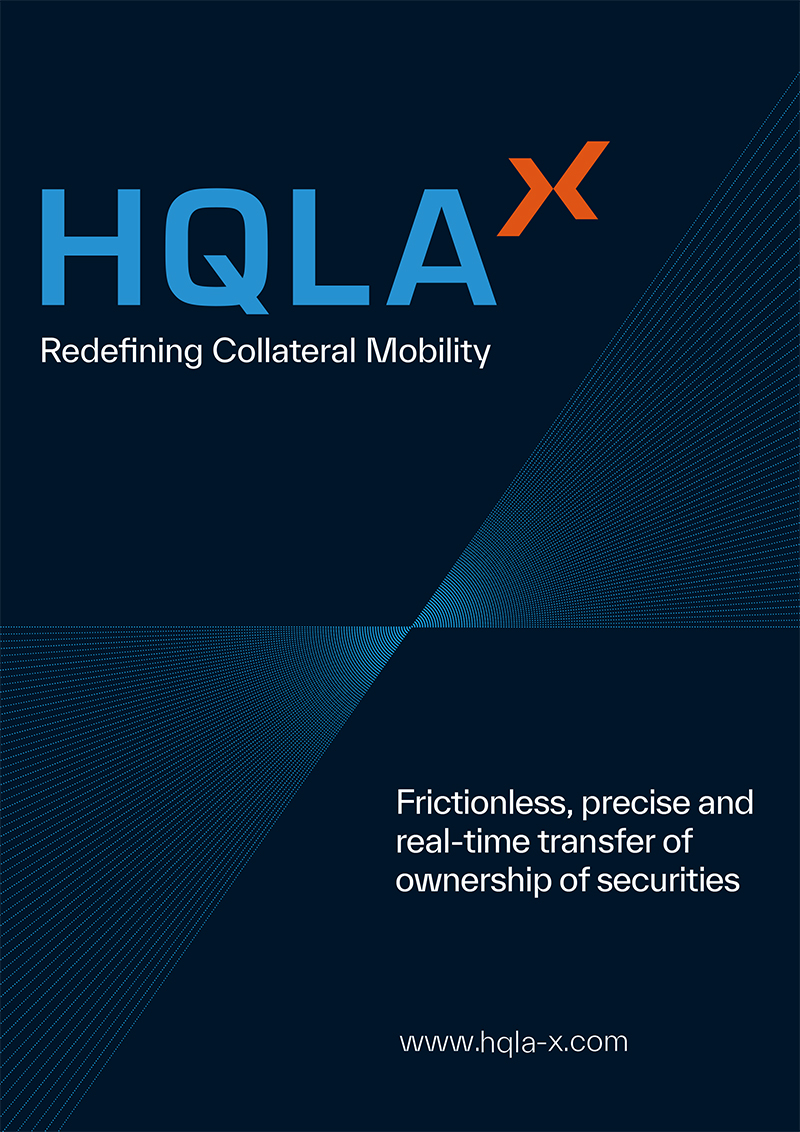The move to T+1: short-term pain will lead to gain for securities lending
23 January 2024
Firms already operating in an STP environment are well positioned for the shift to a shorter settlement cycle, according to Ryan Barrett, head of securities finance, North America at Northern Trust, who breaks down how market participants can best prepare for the transition
 Image: Shutterstock
Image: Shutterstock
The May 2024 transition to T+1 in North America will have a significant impact on a wide range of financial services functions and products. With this shift, securities and cash transactions will settle within one business day after trade-date versus the current two-day standard. This will have the benefit of increasing market efficiencies and reducing settlement and counterparty risk. However, industry participants need to be prepared for the changes to daily trading functions that will likely result.
For securities lending programmes in particular, T+1 will create an immediate need for streamlined processing. The most poignant example of this is when securities on loan need to be returned to meet sale obligations that fund purchases. Timely notification, standardised communication and efficient collateral management are of paramount importance. Facing a shorter settlement window means market participants will have to expedite their processes, including establishing earlier instruction deadlines and intraday trade notifications, to improve their efficiency.
As market participants grapple with this shortened timeline, those that currently operate in a straight-through processing (STP) environment are well positioned because they have automated systems that allow data to flow between multiple parties. Those that do not may struggle with the shortened settlement window and will need to quickly ramp up their automation, either by making changes to their systems or by working with providers that already operate in a straight-through environment. These short-term pains can lead to efficiency gains that help market participants reap the benefits of T+1.
The impact on securities lending
The securities lending industry is anticipating unique challenges as it transitions to T+1. The shift means that borrowers and lenders will have to shorten notification timeframes to process transactions within hours instead of days. For example, the current cut-off time for recalls is up to 15:00 Eastern Time on trade date + 1, but this will be incompatible with the compressed settlement cycle. It will be important for investment managers to relay sale notifications as close to market execution as possible so that, in the case of recalls, the recall due date and contractual settlement date align. Without timely sale notifications, there is a risk of delay or settlement failure, which can have financial consequences.
Communications standards will go a long way in easing the transition to T+1. Establishing industry standards for recalls, for example, would cater to the needs of lenders and borrowers. This means agreeing on cut-off times, across different time zones, and receiving more real-time information to complete multiple automated security recalls within a single day.
The shift to T+1 also puts collateral management under the spotlight as borrowers may be required to put up collateral more quickly to meet margin and settlement requirements. Market participants with automated collateral management systems will more easily adapt to the shortened timelines, with access to more efficient processing and improved data tracking.
While the transition to T+1 may create short-term pains for securities lending, the shortened settlement window has the potential to create long-term gains. First, the shift to T+1 is driving industry wide automation, improved communication standards and heightened use of technology to help minimise challenges. This will make markets more efficient to better serve investors.
Second, T+1 may drive counterparties to consider securities lending to source securities to meet a compressed settlement window, increasing securities lending volumes. Finally, the shift may alleviate associated market risk, since the time one party is exposed to counterparty risk will be shorter than before, therefore reducing the potential exposure to a default or other adverse events.
How to prepare for T+1
The goal of T+1 is to create a more efficient market environment by enabling more thorough STP. Improving automation and communicating more efficiently will be of the utmost importance for a smooth and successful transition.
As the shift to T+1 nears, it may be helpful for market participants to review their preparedness — the following questions are important to consider.
Considerations for beneficial owners via their investment managers:
• Do you operate in a straight-through processing environment when instructing trades?
• Have you considered any technology upgrades to meet the condensed settlement window?
• Is your sale notification process automated and aligned with trade execution?
• Have you assessed the impact of T+1 on your liquidity management?
Considerations for borrowers:
• Does your securities lending programme utilise automated processes?
• Is your recall communication process automated?
• Do you operate in a straight-through processing environment for recalls?
• Have you considered any technology upgrades to meet the condensed settlement window?
• Have you assessed the impact of T+1 on your liquidity management?
• Are you prepared to provide collateral more quickly?
• Are you currently using a service provider to manage non-cash collateral?
If the answer is ‘no’ to any of these questions, market participants should seek to improve their processes and technology or find a service provider that can help them to automate more quickly. For instance, borrowers that manually manage their non-cash collateral will benefit from automated collateral management capabilities. In addition, it is vital for market participants to assess the efficiency of their middle and back-office procedures as they undergo the shift to T+1 since the success of securities lending is dependent on timely notification and accurate communication. A service provider with efficient investment operations that is prepared for the changing market environment will be best suited for this transition.
Embracing automation
The move to T+1 is quickly approaching, and market participants need to adapt to ensure they are prepared. It will be critical for post-trade processes to be timely and automated, considering the significant narrowing of the window between trade communication and settlement. T+1 will reconfigure a number of the ways the securities lending market operates, leading to short-term pain — but participants in securities lending programmes will ultimately gain from the improved efficiency and increased automation that will result.
For securities lending programmes in particular, T+1 will create an immediate need for streamlined processing. The most poignant example of this is when securities on loan need to be returned to meet sale obligations that fund purchases. Timely notification, standardised communication and efficient collateral management are of paramount importance. Facing a shorter settlement window means market participants will have to expedite their processes, including establishing earlier instruction deadlines and intraday trade notifications, to improve their efficiency.
As market participants grapple with this shortened timeline, those that currently operate in a straight-through processing (STP) environment are well positioned because they have automated systems that allow data to flow between multiple parties. Those that do not may struggle with the shortened settlement window and will need to quickly ramp up their automation, either by making changes to their systems or by working with providers that already operate in a straight-through environment. These short-term pains can lead to efficiency gains that help market participants reap the benefits of T+1.
The impact on securities lending
The securities lending industry is anticipating unique challenges as it transitions to T+1. The shift means that borrowers and lenders will have to shorten notification timeframes to process transactions within hours instead of days. For example, the current cut-off time for recalls is up to 15:00 Eastern Time on trade date + 1, but this will be incompatible with the compressed settlement cycle. It will be important for investment managers to relay sale notifications as close to market execution as possible so that, in the case of recalls, the recall due date and contractual settlement date align. Without timely sale notifications, there is a risk of delay or settlement failure, which can have financial consequences.
Communications standards will go a long way in easing the transition to T+1. Establishing industry standards for recalls, for example, would cater to the needs of lenders and borrowers. This means agreeing on cut-off times, across different time zones, and receiving more real-time information to complete multiple automated security recalls within a single day.
The shift to T+1 also puts collateral management under the spotlight as borrowers may be required to put up collateral more quickly to meet margin and settlement requirements. Market participants with automated collateral management systems will more easily adapt to the shortened timelines, with access to more efficient processing and improved data tracking.
While the transition to T+1 may create short-term pains for securities lending, the shortened settlement window has the potential to create long-term gains. First, the shift to T+1 is driving industry wide automation, improved communication standards and heightened use of technology to help minimise challenges. This will make markets more efficient to better serve investors.
Second, T+1 may drive counterparties to consider securities lending to source securities to meet a compressed settlement window, increasing securities lending volumes. Finally, the shift may alleviate associated market risk, since the time one party is exposed to counterparty risk will be shorter than before, therefore reducing the potential exposure to a default or other adverse events.
How to prepare for T+1
The goal of T+1 is to create a more efficient market environment by enabling more thorough STP. Improving automation and communicating more efficiently will be of the utmost importance for a smooth and successful transition.
As the shift to T+1 nears, it may be helpful for market participants to review their preparedness — the following questions are important to consider.
Considerations for beneficial owners via their investment managers:
• Do you operate in a straight-through processing environment when instructing trades?
• Have you considered any technology upgrades to meet the condensed settlement window?
• Is your sale notification process automated and aligned with trade execution?
• Have you assessed the impact of T+1 on your liquidity management?
Considerations for borrowers:
• Does your securities lending programme utilise automated processes?
• Is your recall communication process automated?
• Do you operate in a straight-through processing environment for recalls?
• Have you considered any technology upgrades to meet the condensed settlement window?
• Have you assessed the impact of T+1 on your liquidity management?
• Are you prepared to provide collateral more quickly?
• Are you currently using a service provider to manage non-cash collateral?
If the answer is ‘no’ to any of these questions, market participants should seek to improve their processes and technology or find a service provider that can help them to automate more quickly. For instance, borrowers that manually manage their non-cash collateral will benefit from automated collateral management capabilities. In addition, it is vital for market participants to assess the efficiency of their middle and back-office procedures as they undergo the shift to T+1 since the success of securities lending is dependent on timely notification and accurate communication. A service provider with efficient investment operations that is prepared for the changing market environment will be best suited for this transition.
Embracing automation
The move to T+1 is quickly approaching, and market participants need to adapt to ensure they are prepared. It will be critical for post-trade processes to be timely and automated, considering the significant narrowing of the window between trade communication and settlement. T+1 will reconfigure a number of the ways the securities lending market operates, leading to short-term pain — but participants in securities lending programmes will ultimately gain from the improved efficiency and increased automation that will result.
NO FEE, NO RISK
100% ON RETURNS If you invest in only one securities finance news source this year, make sure it is your free subscription to Securities Finance Times
100% ON RETURNS If you invest in only one securities finance news source this year, make sure it is your free subscription to Securities Finance Times



